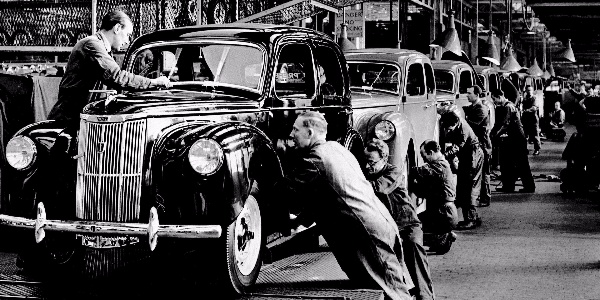The Cost of Fits and Starts
May 21, 2020

I believe the story this week of two domestic Ford assembly plants opening/closing/opening is going to be, unfortunately, typical of restarting our economy. The situation raises several economic questions, at least in my mind, that I can’t seem to find being addressed publicly.
According to articles on CNN.com and TheHill.com, two workers tested positive for the coronavirus the day after the plants opened. A Ford spokesman said they didn’t contract the virus at the plant, however, the two workers along with an unspecified number of others they came into close contact with were told to self-quarantine for 14 days. The company shut the plants down to disinfect the areas and the thousands of other workers at both plants were sent home. The plants reopened the next day.
So, here are my questions:
- Are people who are told to go home and quarantine for 14 days paid for those 14 days, and is every employee paid for 14 days every time this happens? Remember, they don’t have to test positive, they only have to come in contact with someone who does. Theoretically, then, a worker who is healthy and showing no symptoms but has been in close contact with someone is not allowed to work. That same worker, upon returning from their healthy quarantine, may encounter another co-worker who tests positive thus triggering the same quarantine procedure. How long will a company continue to pay healthy workers to stay home? I don’t know of any employment contract – awarded either independently or through collective bargaining – that has unlimited sick pay.
- Do the healthy workers who were not quarantined but got sent home due to the plant closures get paid for the lost time?
- How will companies operate productively with a fluctuating number of employees missing from various positions? In manufacturing it’s difficult to have an assembly line when positions on the line are empty. Will this be addressed through creative staffing like, maybe, platooning the workforce? Let’s say, for example, that one of the aforementioned Ford plants have four assembly lines. If they decided to open only two lines, that would leave two lines worth of workers “on-call” to fill in on assembly lines when those lines’ workers have to quarantine. How would companies pay these “on-call” workers? It’s unrealistic to have them hopping off and on unemployment, or expecting the company to pay them continually on the chance they might be needed.
The costs are staggering, according to some numbers I could find:
- Number of employees at the two plants: 10,200 (according to the CNN.com article).
- Average hourly labor cost (wages, benefits, etc.) for a union autoworker at Ford: $61.00 (according to the Center for Automotive Research).
Thus, Ford’s labor costs are $622,200 every operating hour just at these two plants alone.
How will a company remain competitive, profitable or even sustainable if it’s unable to control these costs because of unexpected and unavoidable interruptions in labor and production?
Did Ford follow the suggested guidelines when opening the plant? CNN quoted a Ford spokesperson saying, “Our protocols are in place to help stop the spread of the virus,” noting that workers’ temperatures were checked upon arrival, PPE was dispensed, and there were reminders about social distancing. But “reminders” is apparently all they did. CBS2 in Chicago quoted employees as saying, “Social distancing doesn’t really work” in the plant, and “all these people are crowded and on top of each other.”
If labor costs in this scenario seem high, imagine what it would cost manufacturing companies to retool all their facilities to accommodate social distancing. I don’t even know where to begin to look for those estimates!
Until these types of issues can be addressed consistently and with confidence — that workers are safe and companies can control costs — our economy as a whole will only be able to restart in fits and starts.



